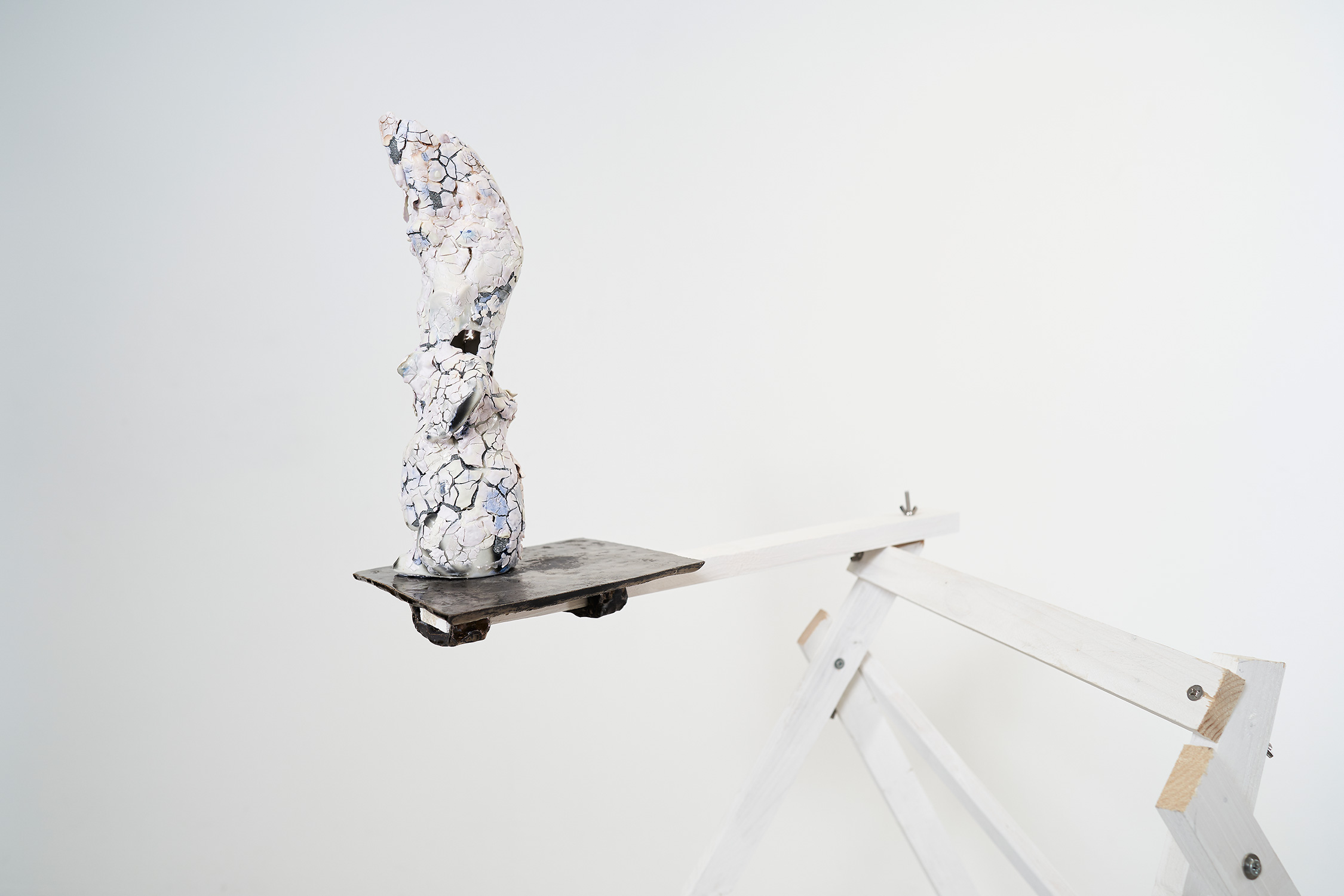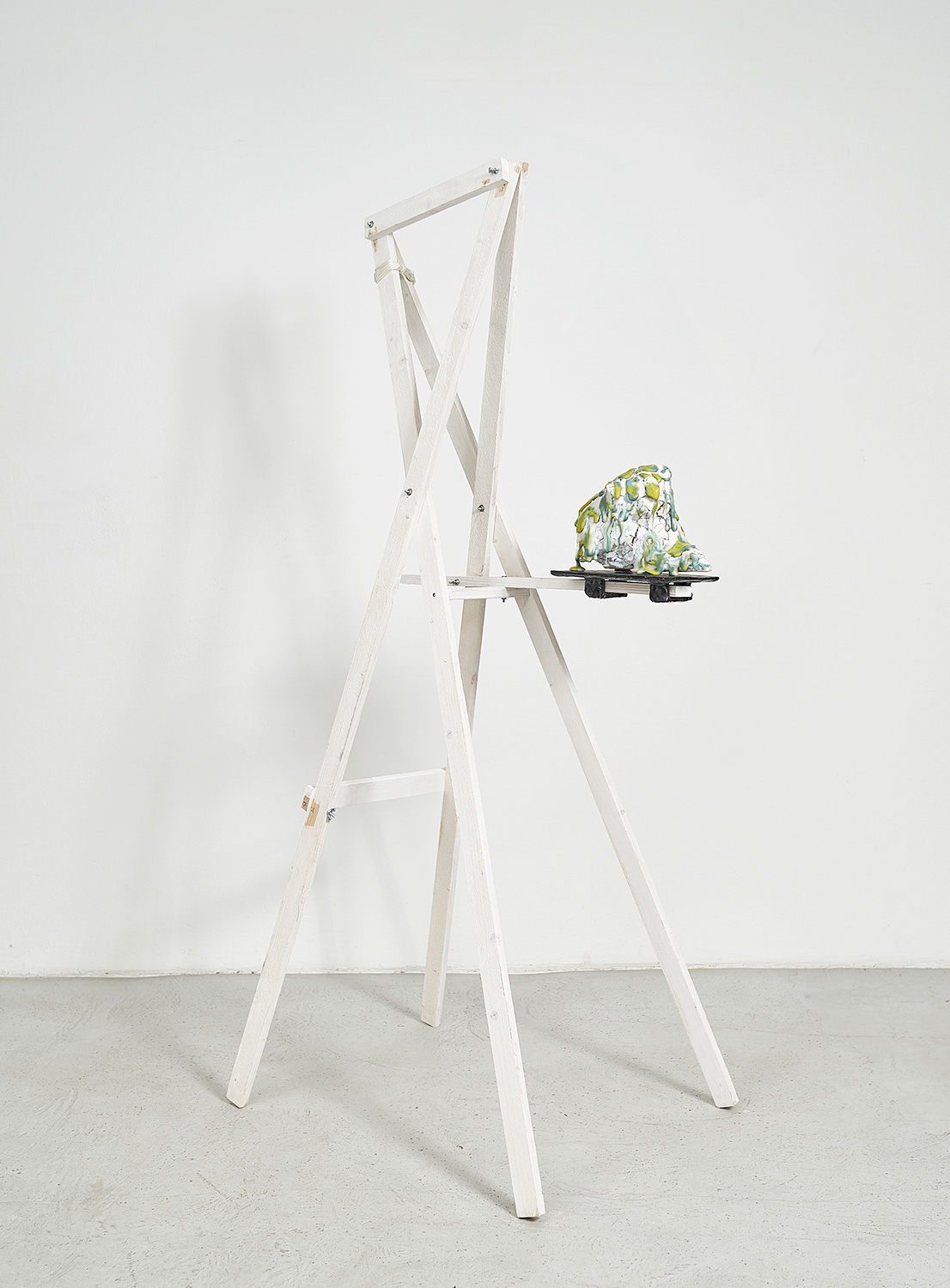Pose
![]()
exhibition view (paintings Magdalena Waller)
![]()
![]()
pose I
ceramic, glaze, second-hand ceramic dogs, wood; 69 x 75 x 134 cm
![]()
untitled
ceramic, glaze, lustre, second-hand ceramic tiger; 76 x 30 x 33 cm
![]()
pose II
ceramic, glaze, lustre, second-hand ceramic leopard, wood; 44 x 46 x 134 cm
![]()
pose IV
ceramic, glaze, lustre, second-hand ceramic leopard, wood; 80 x 56 x 176 cm
![]()
![]()
pose III
ceramic, glaze, second-hand ceramic tigers, wood; 76 x 50 x 190 cm
![]()
pose V
ceramic, glaze, lustre, second-hand ceramic tigers, wood; 91 x 53 x 92 cm
manipulation of delphi, 2020/2021
group exhibition at kunstarkaden Munich
project webside
"Know thyself" was written
above the oracle of Delphi; but how does one know oneself in the present?
During the COVID-19 pandemic we learned that predictions more often tak the
form of oracles, and today's oracles come across as predictions. What does this
say about
us?
The collaborative exhibition Manipulation of Delphi addresses these questions, and
its title seems almost prophetic in this, given the planning that had already
taken place in 2019. “Manipulation of Delphi” was inspired by the so-called
"Delphi method", a multi-stage qualitative decision-making process
based on statements from very different experts. Thus, the method is an
intellectual and collective experiment, directed towards the future. The three
artistic positions translate this procedure into a series of material
experiments. They play out the uncertain relationship between predictable and
unpredictable, between manipulable and uncontrollable material processes and
material effects.
In her paintings, Magdalena Waller
focuses on the tension between self-activated oxidation dynamics and fixing interventions. Julia Klemm and Christian
Engelmann take the kiln as starting point within the transformative ceramic
process.
In their complex interplay, artistic
prognosis, intervention and material momentum produce different results: In
Waller's paintings, architectural figurations, abstracted from ancient models,
appear on silver leaf mosaics arranged in lattice-like structures with outlines of varying concision. In these
self-forming light paintings, Waller uses natural oxidation processes of leaf
metals, a traditional technique in Japanese temple painting. The decision to arrest the process of oxidation, or allow it to continue,
appears individually in each work.
Waller’s paintings communicate with
equally fragile sculptural assemblages by Klemm. Composed of seemingly unstable
pedestals and ceramic objects, they suggest different moments of toppling and
breaking, depending on the position the viewers take up in front of them.
Porcelain animals are Klemm’s basic material. She fragments and recomposes them in multiple firings, all the while covering them with viscousglazes.
The firing process also plays a key role in Engelmann’s work, when he
surrenders national flags on ceramic plates to the kiln. His work “Point of
View” (“Standpunkt”) can be understood as a refused experiment. An installation
of light rods invites visitors to move through the room and try out different
points of view, but at the same time it rejects this invitation: the high
voltage rods are deadly and make any access impossible.
Prognostic and prophetic statements
throw those seeking the future back on themselves and their human ignorance.
This is one possible insight of the exhibition. And it was precisely the
meaning of the Delphic "know thyself" in many ancient tragedies.
The irony of the ancient fates would
have it that the exhibition itself was exposed to the
greatest imponderables.
The COVID-19 pandemic sent it into an ongoing curatorial
experiment,
culminating in a ritualised preview series in Klemm’s and Waller’s studios and
a brief opening at the Kunstarkaden. Now, the exhibition is closed again and
can be seen fro the outside, through the windows alongside Sparkassenstraße.
In addition, short films (youtube) are
being created under the direction of the artists.
Tanja Klemm und Jan Söffner








